 Miscellaneous
Miscellaneous  Miscellaneous
Miscellaneous  Our World
Our World 10 Green Practices That Actually Make a Difference
 Humans
Humans Ten Historic Men Who Deserve Way More Credit Than They Got
 Movies and TV
Movies and TV The 10 Most Heartwarming Moments in Pixar Films
 Travel
Travel Top 10 Religious Architectural Marvels
 Creepy
Creepy 10 Haunted Places in Alabama
 History
History Top 10 Tragic Facts about England’s 9 Days Queen
 Food
Food 10 Weird Foods Inspired by Your Favorite Movies
 Religion
Religion 10 Mind-Blowing Claims and Messages Hidden in the Bible Code
 Facts
Facts 10 Things You Never Knew about the History of Gambling
 Miscellaneous
Miscellaneous Ten Groundbreaking Tattoos with Fascinating Backstories
 Our World
Our World 10 Green Practices That Actually Make a Difference
 Humans
Humans Ten Historic Men Who Deserve Way More Credit Than They Got
Who's Behind Listverse?

Jamie Frater
Head Editor
Jamie founded Listverse due to an insatiable desire to share fascinating, obscure, and bizarre facts. He has been a guest speaker on numerous national radio and television stations and is a five time published author.
More About Us Movies and TV
Movies and TV The 10 Most Heartwarming Moments in Pixar Films
 Travel
Travel Top 10 Religious Architectural Marvels
 Creepy
Creepy 10 Haunted Places in Alabama
 History
History Top 10 Tragic Facts about England’s 9 Days Queen
 Food
Food 10 Weird Foods Inspired by Your Favorite Movies
 Religion
Religion 10 Mind-Blowing Claims and Messages Hidden in the Bible Code
 Facts
Facts 10 Things You Never Knew about the History of Gambling
10 Ways Belgium Will Change The Way You Drink Beer
Belgians are crazy about beer. Young Belgians are weaned on beer with soda, and old Belgians drink it with breakfast. Even the monks in Belgium make beer. The country has been in the brewing tradition since the 1100s—before it even was a country—and time has only served to open the doors for more and better ways to make the inebriating honey of the gods.
SEE ALSO: 10 Legendary Beer Facts To Get You Drunk Off Knowledge
We visited a few places in Belgium where beer is nigh religion and tasted for ourselves the holy fervor that has stood to make this country a bastion of alcoholic enlightenment. In the process, we’ve come to an inescapable conclusion: These guys are crazy about beer, and we love it.
10Beers Per Capita
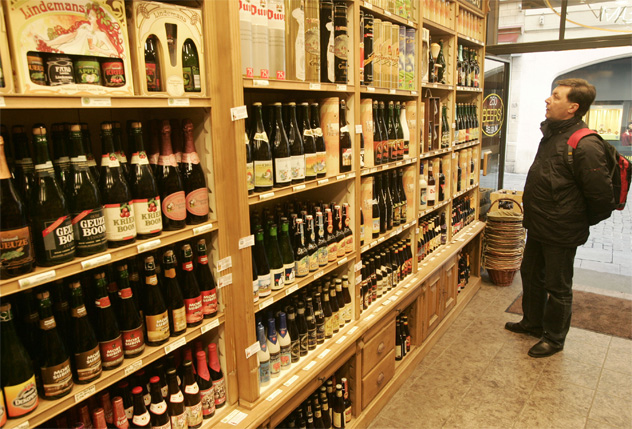
Belgium has more individual styles of beer per capita than any other country in the world. With a population barely scraping past 11 million, they produced a whopping 1,132 distinct types of beer in 2011. Fast-forward to 2013 and that number is a mind-blowing 3,043 beers that were brewed among all 10 provinces of Belgium. The Flemish Brabant, a province in the north of Belgium, makes 457 beers on its own.
The region’s interest in beer began when the Catholic Church sanctioned the use of abbeys to brew and distribute beer to raise money for upkeep near the end of the 10th century. Over the years, the nuns in the abbeys began pioneering new ways to brew, strengthening the diversity that was available to the locals in brewing villages. At the turn of the 20th century, there were over 3,000 breweries in Belgium, but the two World Wars had a devastating effect on the Belgian economy that reached deep into the brewing industry. Now, there are only about 180 breweries in Belgium.
9Spontaneous Fermentation
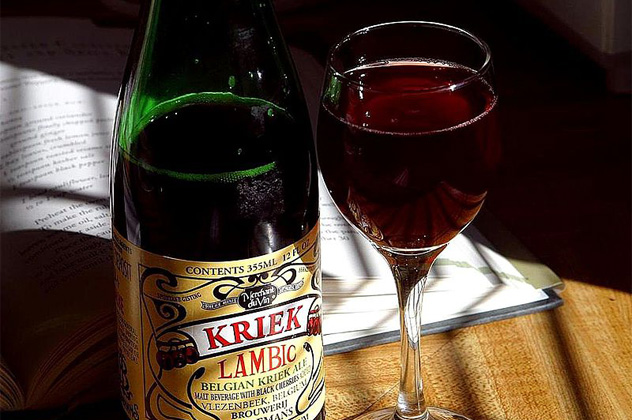
Known in Belgium as lambic, spontaneously fermented beers have been brewed since the 14th century. The process isn’t at all unique to Belgium, but they’re certainly pioneering the modern form of spontaneous fermentation. Normal beer is made with three ingredients—malt, hops, and yeast. The malt makes it sweet, the hops add the bitter taste, and the yeast ferments the whole thing into alcohol.
Typically, the yeast is added from a package or a live culture. Saccharomyces cerevisiae is a common brewing yeast, although there are others. But in spontaneous fermentation, the malt and hops are left to cool in the open air. This introduces wild yeast into the mixture, giving the brew a quality that is unique to the region where it was brewed, since it depends on the natural yeasts in the air to start the fermentation. Lambic is made exclusively in Belgium’s Zenne valley, where the wild yeasts Brettanomyces bruxellensis and Brettanomyces lambicus thrive.
Lambic by itself is acidic and flat, but if there’s one thing you can say about Belgian brewers, it’s that they never give up on a beer. To fix it, they brew a batch of lambic and then age it for six months. Then, they brew a fresh batch and mix the two together. Finally, while it’s still fermenting, they bottle it, trapping the carbon dioxide and keeping it nice and bubbly. When you throw all those steps together, the result is an even more unique beer type known as Geuze (pronounced like a heavily accented “goose”). Now that’s dedication.
8Beer Cocktails

Jurgen Bollion and his brother Steven are the joint owners of the Taste M, a little bar bolted to the front of a small art museum in Leuven. Jurgen, a jovial man with a linebacker build and perpetually flushed cheeks, visits each table in person with a tray full of “fixings” for his signature drinks: beer cocktails.
The only way to describe a beer cocktail is “whatever Jurgen wants to put in it.” But you’re in good hands. As he works, he explains what each ingredient does for the drink: Sweetwood (part of the licorice family) for a tart flavor, tonic for a bitter middle taste, several shots of gin for strength, a bottle of Caulier 28 tripel for the beer, and ice to give the flavor more variety. He explains that, as the ice melts and the sweetwood seeps into the drink, the flavor changes, making each sip a little different. Then he makes a round of the table to tip more gin into each glass with a gruff “drink more.”
And that’s just one cocktail. Jurgen has created hundreds of recipes for unique beer cocktails, each one meant to emphasize a different taste profile. One of his goals is to get past the perception that beer is a “man’s” drink. In his words, everybody likes beer, you just have to find the right one—“They say to me, ‘I don’t like beer.’ And I say, ‘No, you don’t like the beers that you have tried up to this point.’ ” He wants to find everybody’s perfect beer. That’s a man with an admirable mission.
7“The Longest Bar In The World”
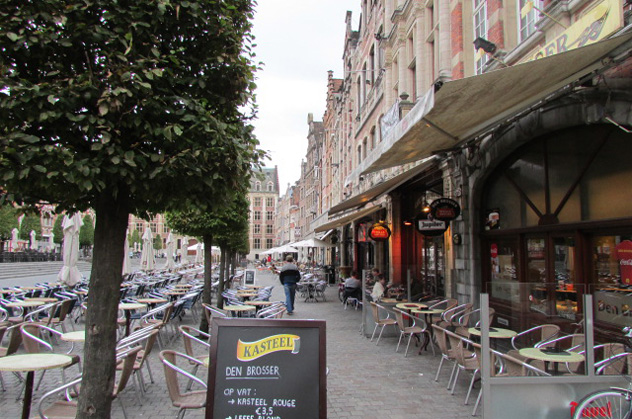
This is a local colloquialism for a square officially known as the Oude Market, located in Leuven. The market is basically a long, open courtyard with a line of businesses running along one side. So why is it called the longest bar in Europe? Well, over 40 of those businesses just happen to be bars. Since each bar has an outdoor patio, the experience is one of an unbroken outdoor terrace that runs for nearly half a kilometer (0.3 mi).
Of course, despite its name, it’s not actually the longest bar in the world, or even Europe. There are several contenders to the title, most of them named by generations of locals who grew up with the phrase and simply want to keep it alive in their home town. Nevertheless, the Oude Market is a unique place to visit, and one of the bars, Domus, is even supplied by a direct pipeline to its nearby brewery.
And the other side of the square? That’s a university. In many parts of Belgium, especially Leuven, college students get beers for €1 as a thanks from the brewers to their best customers.
6The Bruges Beer Pipeline
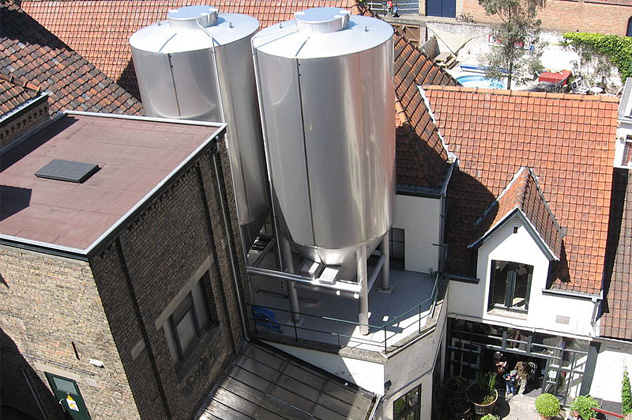
When the De Halve Maan brewery opened up a new bottling plant at the outskirts of Bruges, they hit a snag: As the last brewery in downtown Bruges, their facility has become something of a cultural icon. Bruges was once the proud home of dozens of breweries both large and small, but one by one they each closed their doors for the last time. De Halve Maan has been standing since the 16th century, and over 100,000 tourists flock to Bruges to view their brewery and beer museum every year.
So moving the brewery closer to the bottling plant is definitely not an option, but as it stands now, a fleet of 500 trucks is required to transport the beer from barrel to bottle, a fleet that accounts for 85 percent of Bruges’s current commercial traffic. The streets are literally clogged with beer.
That’s all going to change with an underground beer pipeline. It won’t be the first in the world—Germany has a beer pipeline running under the Veltins-Arena football stadium, and the Great Lakes brewery in Cleveland has a small underground system. But while Great Lakes only pipes their beer across the street, De Halve Maan is building a monstrosity that runs 3 kilometers (1.8 mi) under the city. It’ll pump 100 liters (26 gal) of freshly brewed beer every minute.
5The Farm Brewery
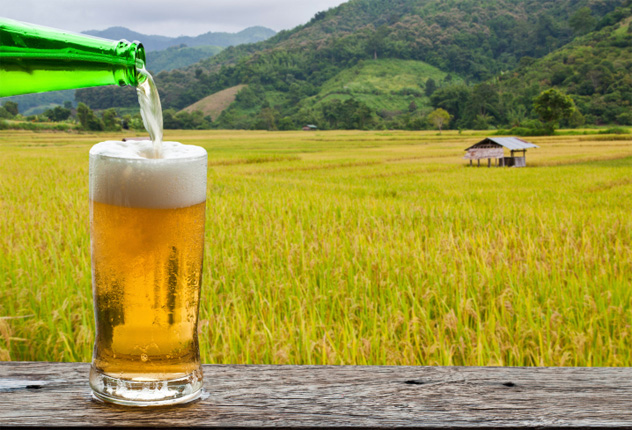
In the fields outside the tiny town of Tildonk, father and son team Andre and Dries Janssens operate one of the most unique breweries in the world: Hof ten Dormaal. What started as a simple barley farm slowly evolved into an international brewing venture. Looking for ways to make their farm more efficient, the Janssens decided to set up a small brew operation to get rid of the extra barley. Then, they decided to grow their own hops instead of buying them.
From that point, they settled on a unique concept: Everything in their beer would be made or grown on their farm. Soon, they were also bottling the finished creations right beside the haystacks. A state-of-the-art bottling line lets them cap 2,000 bottles of their farm brews per hour.
Even after they began shipping 90 percent of their output to willing buyers in the US, the Janssens weren’t content—they decided to try aging some of their beers in old liquor barrels, and so they took off on a trek across Europe to find wooden barrels that had spent years soaking up the flavors of cognac, armagnac, port, sherry, and whiskey.
4Trappist Beer
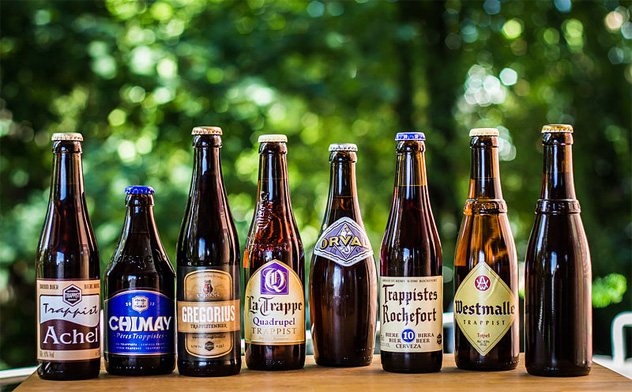
In the silent halls of a 17th-century Trappist monastery, something dark is brewing. The Order of Cistercians of the Strict Observance, commonly referred to as the Trappists, is a monastic order that focuses on the work of one’s own hands as the true path to salvation. Although they don’t take an official vow of silence, Trappist monks avoid speaking unless absolutely necessary, and any speech that mocks or puts down someone else is a sin. All in all, they’re not bad fellows.
But regardless of any religious affiliation, Trappist monks brew some of the meanest beers in the world. There are only 10 authentic Trappist breweries in the world, and six of those are in Belgium. Westvleteren XII, a Trappist beer brewed not far from the city of Ypres, is often called the best beer in the world. Everything the Trappists make from their beer goes back into their abbeys in accordance with their vow of poverty.
3World’s Largest Beer Menu
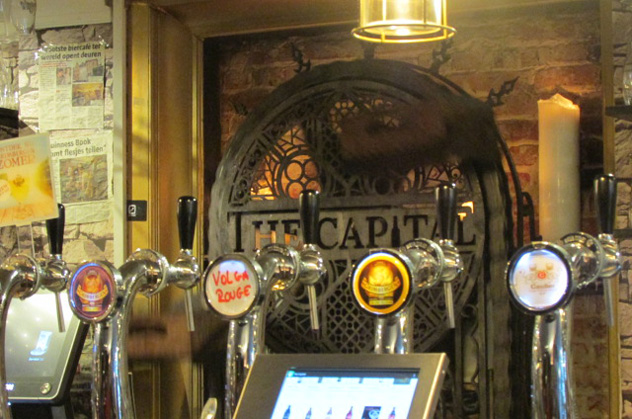
The current holder of the Guinness World Record for most available beers on the menu is Delirium Cafe, located in Belgium’s capital city of Brussels. They have 3,162 beers available on their shelves. You’d have to drink 8.5 beers every day for a year just to taste them all.
We didn’t have a chance to visit Delirium Cafe, but we did stop in for a brew at Belgium’s valiant underdog: The Capital, located in Leuven. With the distinction of second largest beer menu in the world, this unassuming little place looks just the same as any other bar on Brusselsestraat—on the outside. Even the inside, at first glance, looks like your typical bar. But then you realize that the frosted tiles on the floor aren’t tiles—they’re windows. And through the windows is a vision of Valhalla: an entire lower level with row after row of beer-filled shelves standing dark sentinel like Belgium’s answer to Qin Shi Huang’s terra-cotta army.
It works like this: A customer orders a beer. The waitress passes the order to The Capital’s underbelly, where a “beer finder” locates the brew. He places it on a vertical conveyor belt that runs up behind the bar, and it’s served. It may take longer than a traditional bar, but what are a few minutes compared to the option to drink thousands of beers you’ve never heard of?
2Unholy Consumption

As a country, Belgium has been drunk for over a millennium, but to say that Belgians drink a lot of beer is like saying the ocean has a lot of water—we need some specifics. Country by country, Belgium currently stands at No. 18 on the global list of beer consumption by country per capita. On average, each Belgian drinks 74 liters (19.5 gal) of beer every year.
But that’s a symptom of modern times. In 1900, Belgians were guzzling an unholy 200 liters (53 gal) of the fizzy brown stuff each year. One of the reasons for the drop in beer sales is the rise of soft drinks, and even the beer capitals of the world are getting hit by the shift. Many breweries have even begun to reduce the bitter qualities of their beer in an effort to keep up with a customer base that’s gravitating toward sweeter drinks.
1A Glass For Every Beer
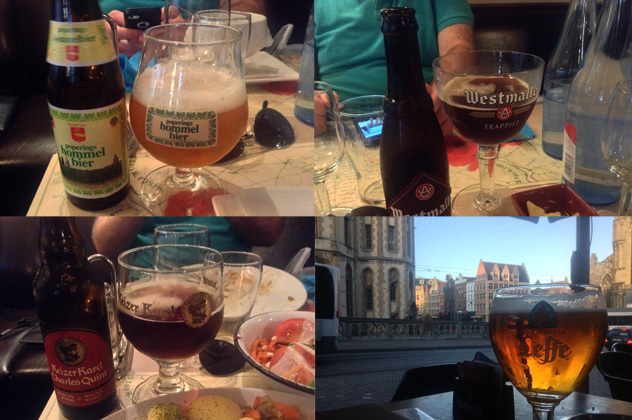
The above photo is just a fraction of the absolute insanity of everyday drinking in Belgium. Every beer comes with a specially designed glass from which to drink it. This isn’t a suggestion—it’s a cardinal rule. When you order a new beer, your old glass will be removed so that a new goblet will have a place to rest its crystal stem. The glass styles are split about evenly between the typical beer-style mugs, pints, steins, and plenty of wine-style flutes. One beer even comes in a bowl.
The idea of using a specific glass for every beer is so prevalent in the region that many breweries start a new recipe by first designing the glass. And believe it or not, this long-standing tradition has been backed up by a handful of studies that conclude that the shape of a glass definitely affects the flavor and aroma of the beer inside.
So what’s in a glass? Quite a lot, apparently. We’re just happy as long as one of those things is beer.
We’d like to thank Marie Venhellemont at Leuven Leisure for the instructive beer tour on our first day. We’re sorry we were so jet lagged. And of course, thanks to Marcos Stupenengo at VisitFlanders for making the whole trip possible. Hope to see you again soon, Belgium!








